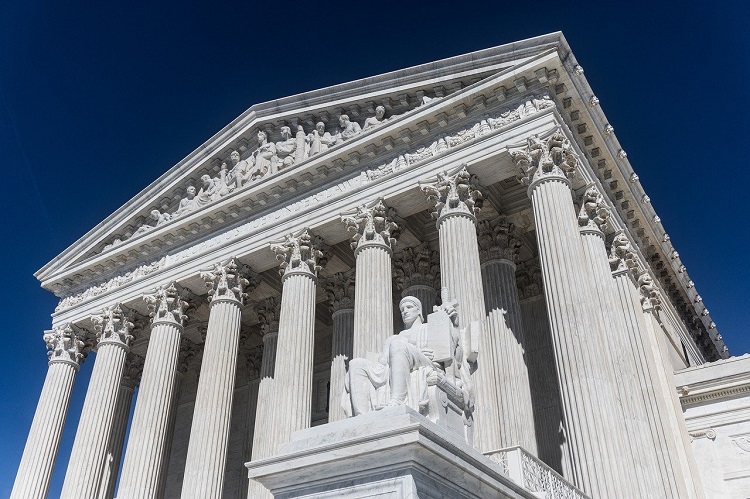Abortion Rights Took Center Stage During Busy Week for Supreme Court

The U.S. Supreme Court heard oral arguments in one of the term’s most closely-watched cases. The issue in Dobbs v. Jackson Women’s Health Organization is whether all pre-viability prohibitions on elective abortions are unconstitutional. However, in defending its controversial abortion law, the State of Mississippi has asked the Court to overturn its prior decisions in Roe v. Wade and Planned Parenthood v. Casey.
Several of the Court’s Conservative justices appeared willing to overrule both Roe and Casey. Justice Brett Kavanaugh argued that the Court should remain “scrupulously neutral on the question of abortion — neither pro-choice nor pro-life.” In support of overruling the cases, Kavanaugh cited cases like Brown v. Board of Education, in which the Court overruled precedent and established new constitutional law.
Meanwhile, the Court’s liberal minority emphasized the importance of stare decisis, arguing that the Court’s decisions should not be impacted by the changing membership of the Court. “Will this institution survive the stench that this creates in the public perception – that the Constitution and its reading are just political acts?” Justice Sonia Sotomayor asked. “I don’t see how it is possible.”
While the abortion case took center stage, the Supreme Court also heard oral arguments in several other cases. Below is a brief summary of the issues before the Court:
Becerra v. Empire Health Foundation: The case involves a provision of the Medicare statute, which provides that a hospital that serves a “significantly disproportionate number of low-income patients” may receive an additional payment for treating Medicare patients, known as the disproportionate-share-hospital adjustment. The statute directs the Secretary of Health and Human Services to calculate a hospital’s disproportionate-share-hospital adjustment (if any) using a formula that is based principally on the sum of two separate proxy measures of the proportion of low-income patients the hospital serves. The first proxy measure, known as the Medicare fraction, is the percentage of all patient days of individuals who were “entitled to benefits under [Medicare] part A” and who were also entitled to supplemental-security-income benefits. Meanwhile, the second proxy measure, known as the Medicaid fraction, is the percentage of all of a hospital’s patient days that are attributable to individuals who were eligible for Medicaid coverage but who were not entitled to Medicare Part A benefits. The justices must decide the following issue: “Whether, for purposes of calculating additional payment for hospitals that serve a ‘significantly disproportionate number of low-income patients,’ the secretary of health and human services has permissibly included in a hospital’s Medicare fraction all of the hospital’s patient days of individuals who satisfy the requirements to be entitled to Medicare Part A benefits, regardless of whether Medicare paid the hospital for those particular days.”
American Hospital Association v. Becerra: The Court’s second Medicare case of the week involved the reimbursement rate paid by Medicare for specified covered outpatient drugs, which is set based on one of two alternative payment methodologies. If the Department of Health and Human Services (HHS) has collected adequate “hospital acquisition cost survey data,” it sets the reimbursement rate equal to the “average acquisition cost for the drug,” and “may vary” that rate “by hospital group.” If HHS has not collected adequate “hospital acquisition cost data,” it must set a reimbursement rate equal to the “average price for the drug,” which is “calculated and adjusted by [HHS] as necessary for purposes of” the statute. The Court has agreed to determine “[w]hether deference under Chevron U.S.A. v. Natural Resources Defense Council permits the Department of Health and Human Services to set reimbursement rates based on acquisition cost and vary such rates by hospital group if it has not collected adequate hospital acquisition cost survey data; and (2) whether petitioners’ suit challenging HHS’s adjustments is precluded by 42 U.S.C. § 1395l(t)(12).”
Cummings v. Premier Rehab Keller, P.L.L.C.: The case will decide whether damages for emotional distress are available in anti-discrimination cases. The specific question before the Court is “[w]hether the compensatory damages available under Title VI of the Civil Rights Act of 1964 and the statutes that incorporate its remedies for victims of discrimination, such as the Rehabilitation Act and the Affordable Care Act, include compensation for emotional distress.”
Decisions in all of the cases are expected by the end of the term in June 2022.
Previous Articles
SCOTUS Wraps Up Oral Arguments for the Term
by DONALD SCARINCI on May 17, 2022
The U.S. Supreme Court has concluded its oral arguments for the October 2021 Term. The justices hea...
SCOTUS Rules Censure of Elected Board Member Didn’t Violate First Amendment
by DONALD SCARINCI on May 10, 2022
In Houston Community College System v. Wilson, 595 U.S. ____ (2022), the U.S. Supreme Court held th...
Supreme Court Breach Is Not the First Involving Roe v. Wade
by DONALD SCARINCI on
The recent disclosure of Justice Samuel Alito’s decision purporting to overturn Roe v. Wade is ar...
The Amendments
-
Amendment1
- Establishment ClauseFree Exercise Clause
- Freedom of Speech
- Freedoms of Press
- Freedom of Assembly, and Petitition
-
Amendment2
- The Right to Bear Arms
-
Amendment4
- Unreasonable Searches and Seizures
-
Amendment5
- Due Process
- Eminent Domain
- Rights of Criminal Defendants
Preamble to the Bill of Rights
Congress of the United States begun and held at the City of New-York, on Wednesday the fourth of March, one thousand seven hundred and eighty nine.
THE Conventions of a number of the States, having at the time of their adopting the Constitution, expressed a desire, in order to prevent misconstruction or abuse of its powers, that further declaratory and restrictive clauses should be added: And as extending the ground of public confidence in the Government, will best ensure the beneficent ends of its institution.




